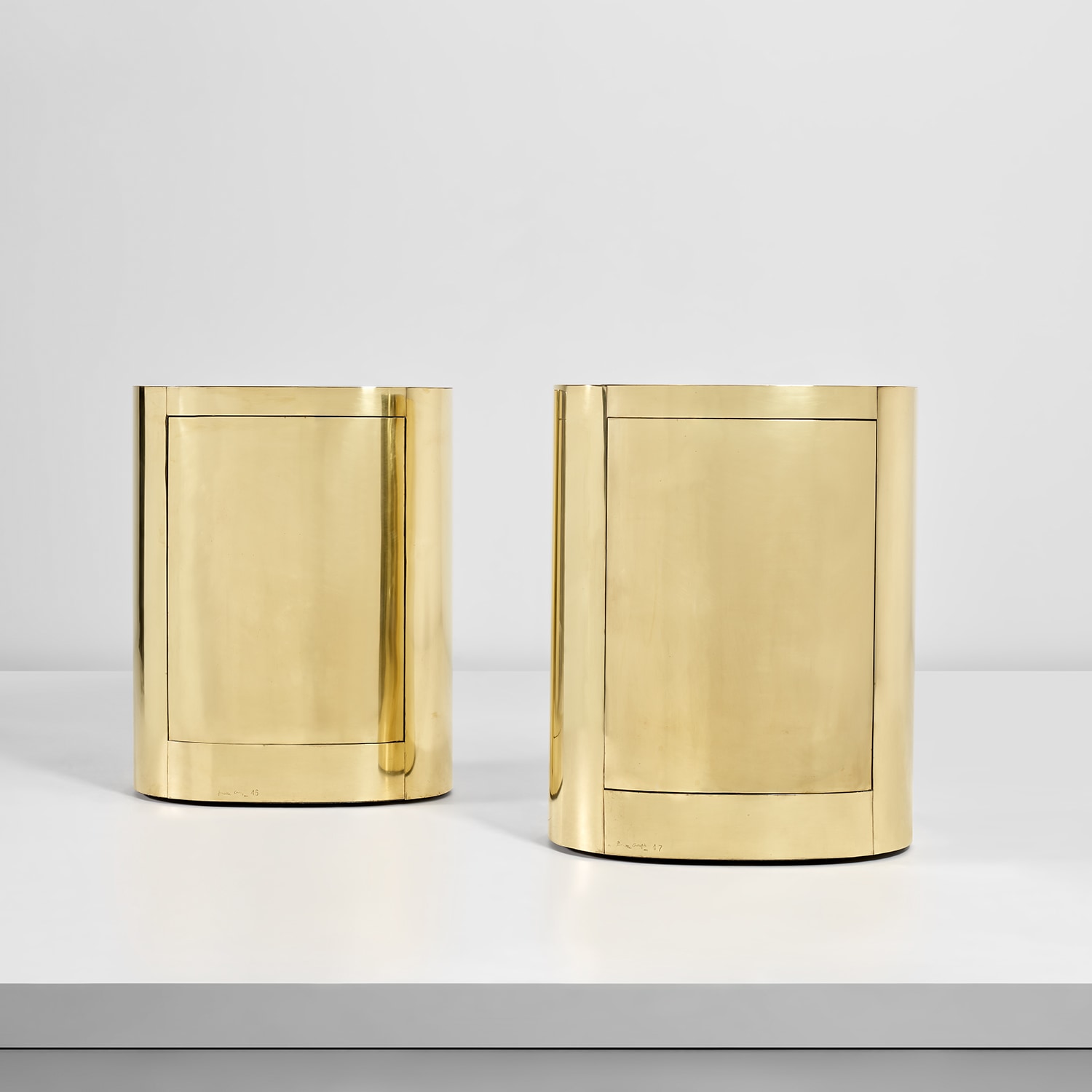
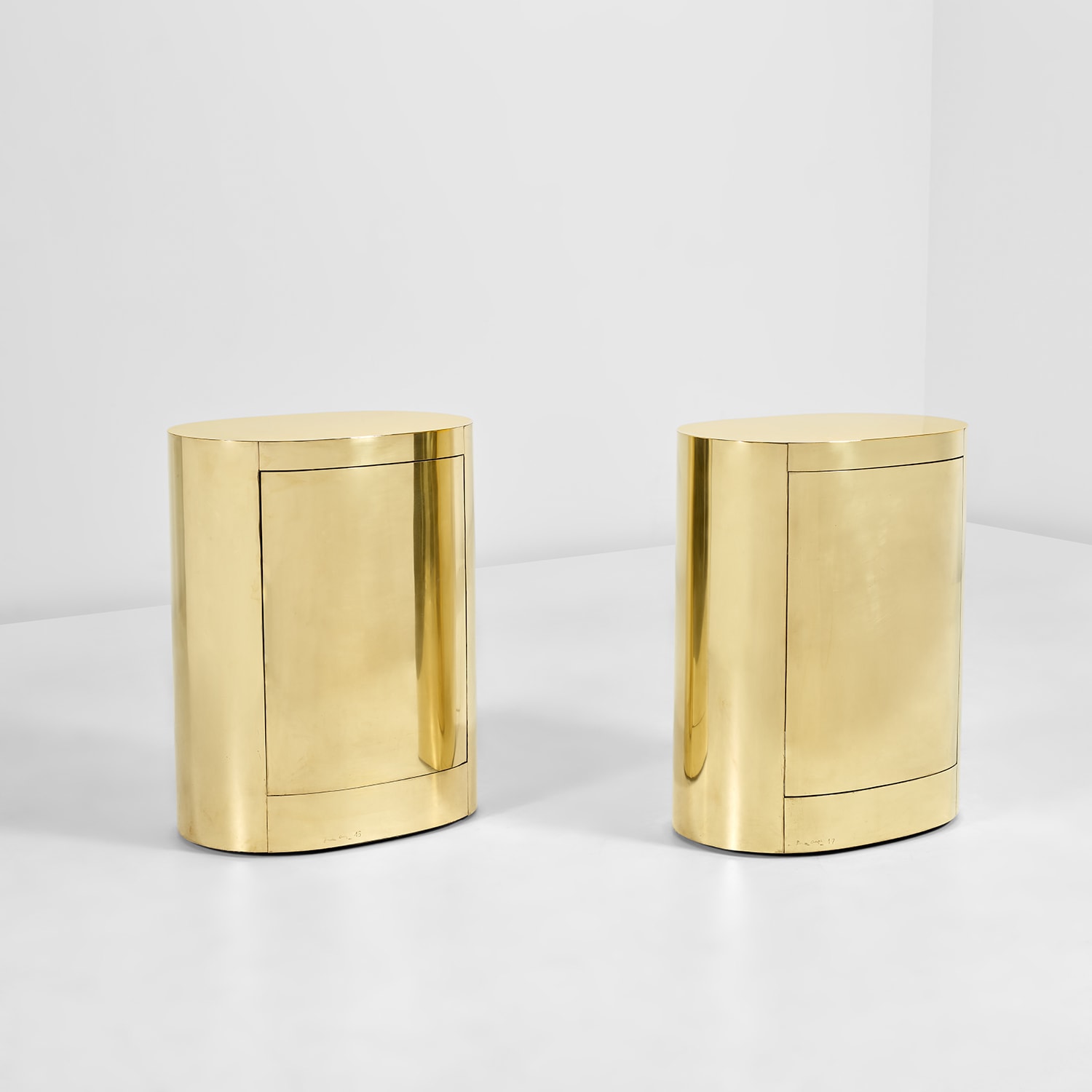
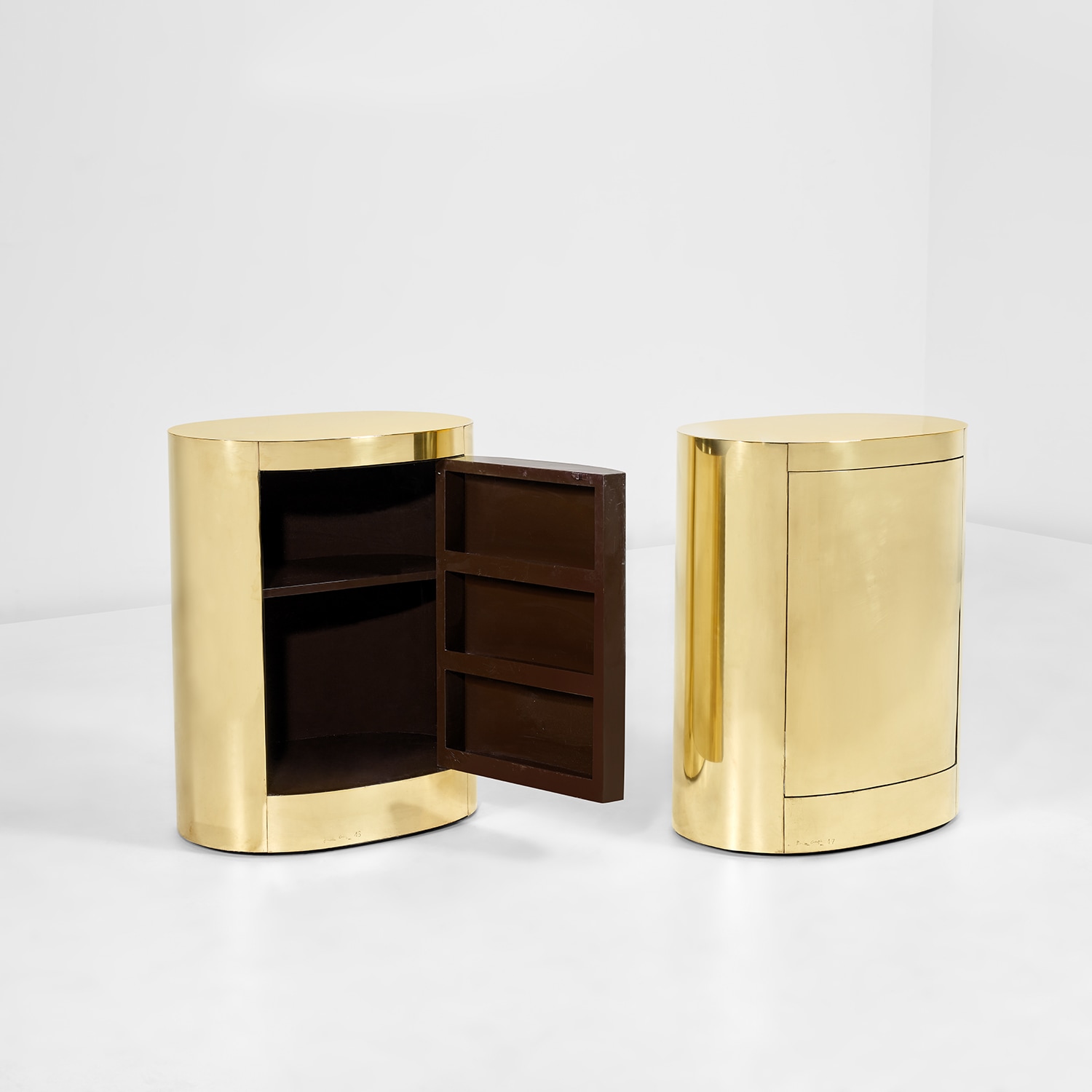

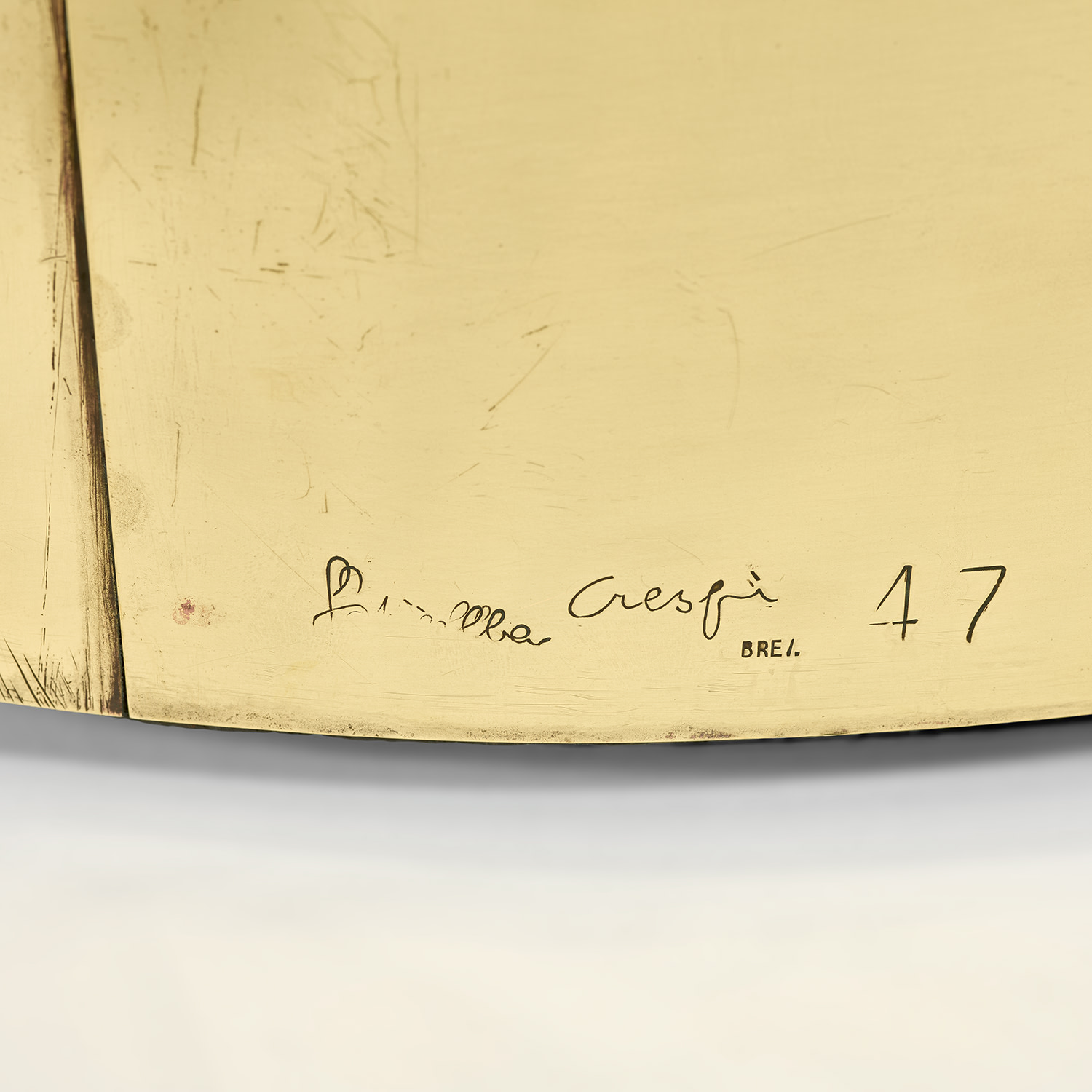
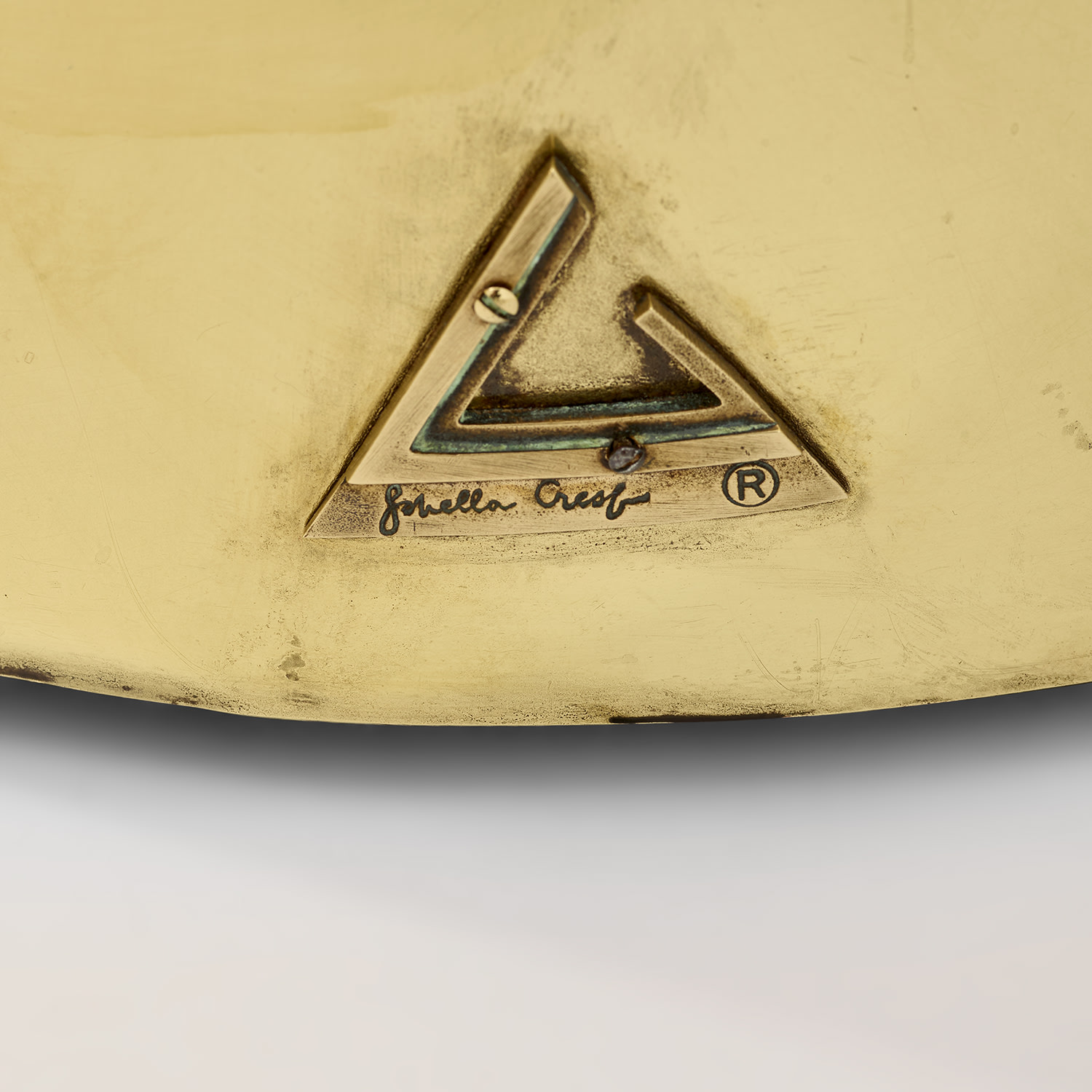






Property from a Private Collection, Monaco
114
Gabriella Crespi
Pair of 'Bar Ovale' cabinets, from the 'Menhir' series
designed 1976, produced 1979
Brass-covered wood, plastic-laminated wood.
Each: 76.9 x 60.5 x 40.4 cm (30 1/4 x 23 7/8 x 15 7/8 in.)
Numbers 46 and 47 from the production of circa 120 examples. Side of one impressed with facsimile signature Gabriella Crespi/BREV. 46 and side of other impressed with facsimile signature Gabriella Crespi/BREV. 47. Side of each with affixed designer's brass logo impressed with facsimile signature Gabriella Crespi and ®. Together with a certificate of authenticity from the Archivio Gabriella Crespi.